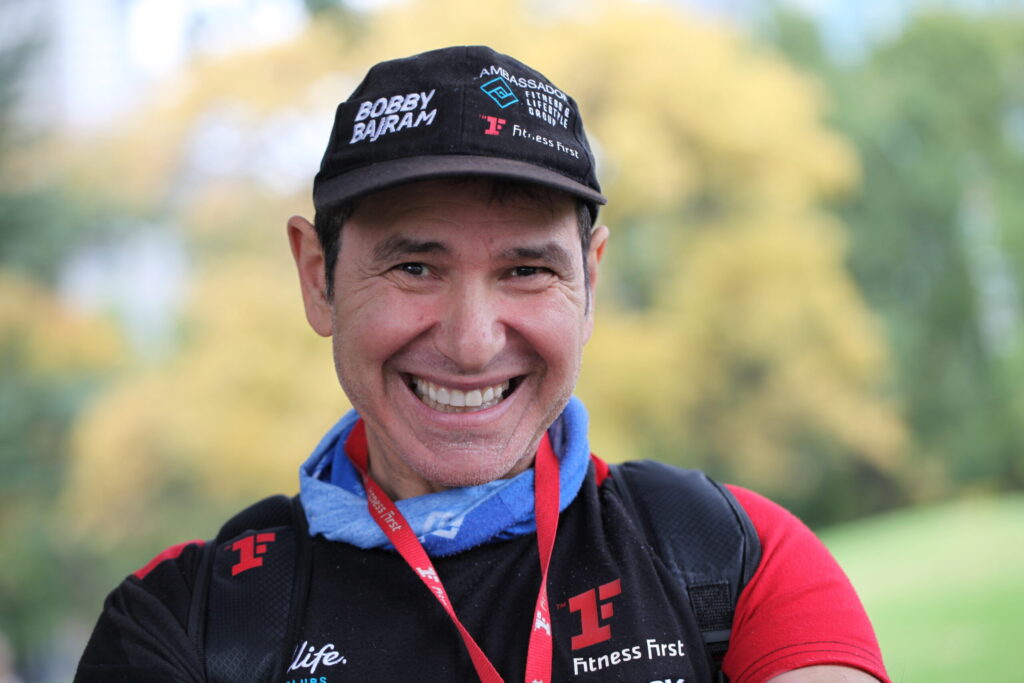The beginning of a long game
Bobby’s story starts long before any summit photo. Diagnosed with multiple sclerosis (MS) at 13, he has faced seasons of impaired mobility and periods of vision loss, but he refused to accept a small life. His mission has always been bigger than a peak: to show that MS doesn’t define the horizon, to advocate for inclusion through action, and to turn his own training into momentum for others living with disability. Over the years, he has built altitude experience step by step, returning to the Himalaya to learn, adapt and apply those lessons to each new objective.
Everest Base Camp, again and again
Everest Base Camp (EBC) isn’t just a postcard location for Bobby, it’s a laboratory. By trekking to EBC multiple times, he collected the data that actually matters at altitude: how his body responds across days, which hydration and nutrition routines stick under fatigue, how medication timing interacts with exertion and sleep, and which logistics reduce stress so energy is preserved for the climbing itself. Repetition here isn’t hesitation; it’s seriousness. Every return stripped out an unknown and replaced it with a plan, building the confidence required for higher, more complex objectives.
Kala Patthar: the first proving ground
Kala Patthar, a rocky outcrop around 5,550 metres, is not a technical climb, but the thin air makes it a truthful teacher. For Bobby, Kala Patthar became a proving ground where theory met reality: pacing above 5,000 metres, what genuine rest looks like when oxygen is scarce, and which daily rituals keep MS symptoms in check. He treated the ascent as a safety tool rather than a trophy, returning to refine the basics. That discipline. Slow is smooth, smooth is safe, now underpins everything that follows.
Mera Peak: building capacity near 6,000 metres
On Mera Peak (6,000 metres), Bobby added longer days and new textures: glacier travel, steady gradients that punish the impatient and the mental game of swapping speed for safety. The lesson was simple but hard to enact and sustainable progress beats heroic spurts. Mera proved that careful pacing and conservative decision-making could coexist with ambition. It also reinforced the importance of recovery: good sleep, deliberate nutrition and hydration and the humility to change the day’s plan when the body whispers “not yet.”
Lobuche East: summit-day wisdom
Summit days telescope everything. Effort, fear, focus, trust. On Lobuche East (6,117 metres), Bobby and his team faced the classic recipe: pre-dawn starts, fixed lines, and an unblinking check on weather and body signals. The view was a bonus; the true takeaway was the value of conservative calls and the discipline to move methodically when fatigue tempts shortcuts. Ropes, rhythm and radio checks mattered as much as legs and lungs. That descent was steady, uneventful, safe. It was its own quiet victory, turning training into wisdom.
Why the “messy middle” matters
Popular stories fixate on summits, but Bobby shares the messy middle because it’s where most people live. The doubts, the pivots, the patience. This is the part that makes sense to anyone who has faced a long recovery, a demanding study load, a business turnaround or a team under pressure. Courage isn’t the absence of fear; it’s community in action. By speaking openly about medical clearances, “no-go” weather calls and the humility to turn around, Bobby reframes success as a string of wise decisions, not a single photo at the top.
Training, lifesavers and community
Beyond the mountains, Bobby’s preparation has included strength and conditioning, coordinated medical oversight and time with lifesaving and safety-focused teams, because resilient habits travel across environments. The routines that keep a surf club safe; communication, role clarity, scenario planning. These are the same ones that guide a rope team on a ridge. As media profiles have noted, his advocacy is simply the daily work made visible: showing the process, sharing the tools and building a community where everyone climbs on mountains and in life.
What this adds up to
Taken together multiple EBC treks, Kala Patthar’s proving ground, sustained exposure near 6,000 metres on Mera, and summit-day lessons on Lobuche East. Bobby has banked the experience that matters most: disciplined pacing, repeatable routines, and trust in a team culture that puts people before peaks. It’s a portfolio of progress, not a highlight reel. And it’s why the journey itself is the point. Every careful step forward becomes a message to others living with disability: your path can be ambitious and safe, demanding and dignified, tough and worth it.
The road ahead
What comes next will still be guided by the same principles: health as the ultimate decision-maker, conservative calls when conditions change, and a commitment to candid storytelling so others can borrow the playbook. Whether the weather opens a summit window or not, the work continues. Training cycles, medical green-lights, logistics, community education and practical support through grants and research.
Follow the journey: Everest Journey
Back the work: Donate • Support MS Research
Bring Bobby to your team or school: Book a keynote
Get involved: Volunteer or partner

